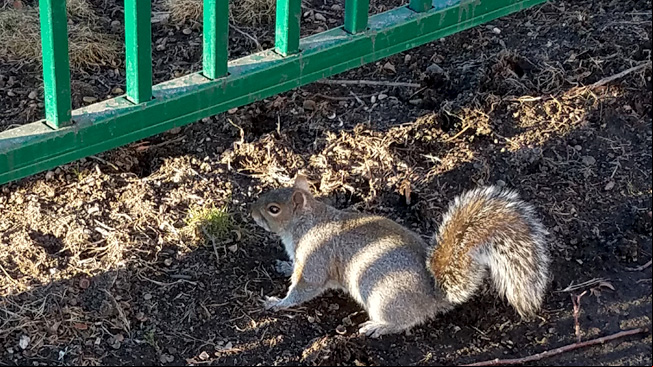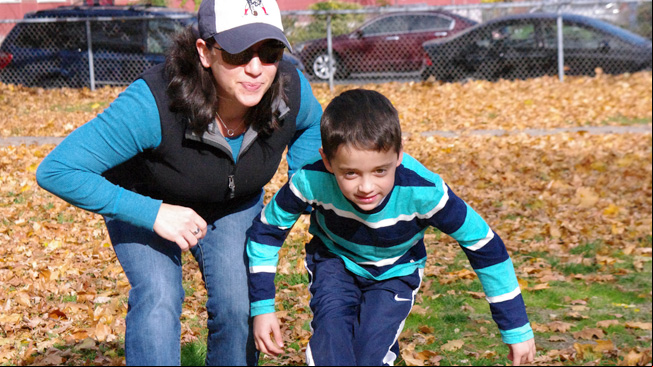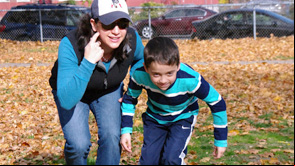Animals Among Us y6c26

What Is This Activity? 1246j
How well do wild animals in a city or town get along with people? Test and compare how close your child can get to pigeons, sparrows, squirrels, chipmunks, lizards, and other city critters. 451wi
Introduction 591p71

Big Science Ideas 2dw5r
- City animals learn to live with people by hiding or fleeing from us, or by getting used to being around us.
Go Outside 45 minutes 4y2v21

- Head with your child to a park, playground, square, or fountain that's popular with city animals. An ideal day and time is when the place is not packed with people.
- On the way there, play the "Cat Walk" game: Pretend to be two-legged cats sneaking up on a mouse. Who can walk more silently? Experiment! Should you …
- stand tall or crouch low?
- walk heel to toe or tiptoe?
- take big steps or little ones?
- Walk very loudly to learn what not to do.
- At your animal-watching spot, pick an animal like a squirrel or a bird, or even an insect, that isn't dangerous or close to other people. Note the animal's location in relation to a bench, a tree, or another object.
- For older or more mature children, hand them a camera and ask them to take the closest, sharpest animal photo they can—without a zoom lens.
- Tell your child to slowly "cat walk" toward the animal. Have your child freeze in place when the animal flies or runs away. Then you walk to and stand on the spot from which the animal took off.
- Estimate the distance between you and your child—the animal's "flee distance." Flee distance is the distance an animal prefers to keep between itself and a threat of danger. Optional: Measure the distance by walking heel to toe, counting each step. Write down the name of the animal along with the number of steps (e.g., pigeon, four steps).
- Test and compare the flee distances of birds, mammals (squirrels, rabbits), and other animals: Which ones let you get closest? Which ones flee the greatest distance? Do any animals freeze and stay put? Are there animals that came toward you or your child? Why? (Perhaps they were looking for food.)
- For older or more mature children: Have them record and later draw a comparison of the flee distances of each animal, or make a photo slideshow or album of the animals at rest and fleeing. Ask them to think about how the time of day (or night) or season might change their results.
- Wonder aloud: Why are some city animals more afraid of people than others? (Animals often become bolder when people feed them—by hand or through garbage. Prey animals [the hunted] are usually more fearful than predators [hunters]. Wild birds are very timid, but many city birds become used to being with people.)
Explore Some More 736219
Leg Up 64e1
"2, 4, 6, 8, who do you appreciate?" With this cheer, launch a neighborhood scavenger hunt to find at least one animal with each of these numbers of legs:
- zero (worms)
- two (an easy one since humans are animals!)
- four (many mammals and reptiles)
- six (adult insects)
- eight (spiders)
- more than eight (centipedes, millipedes, roly-poly bugs)
The Haunted Shipyard Mystery 2g5l70
What's that flying through the air? Watch this short video in which Brad and Oliver investigate a "haunted" warehouse to discover if the eerie screeching is or isn't a ghost.
Ask: Why does the bird scare off the boys? (Protecting its nest.) Why are cities good for raptors and raptors good for cities? Brainstorm reasons together. (There's plenty of mice, rats, squirrels, pigeons, and other food; raptors keep those prey animals from overpopulating; tall buildings make good "cliffs" for nesting, etc.)
Outdoor Family Fun with Plum App 4u1rj
This app gets families outdoors exploring the world. Every day, the app offers five outdoor missions to get everyone thinking and talking about nature and the science that's all around us.
